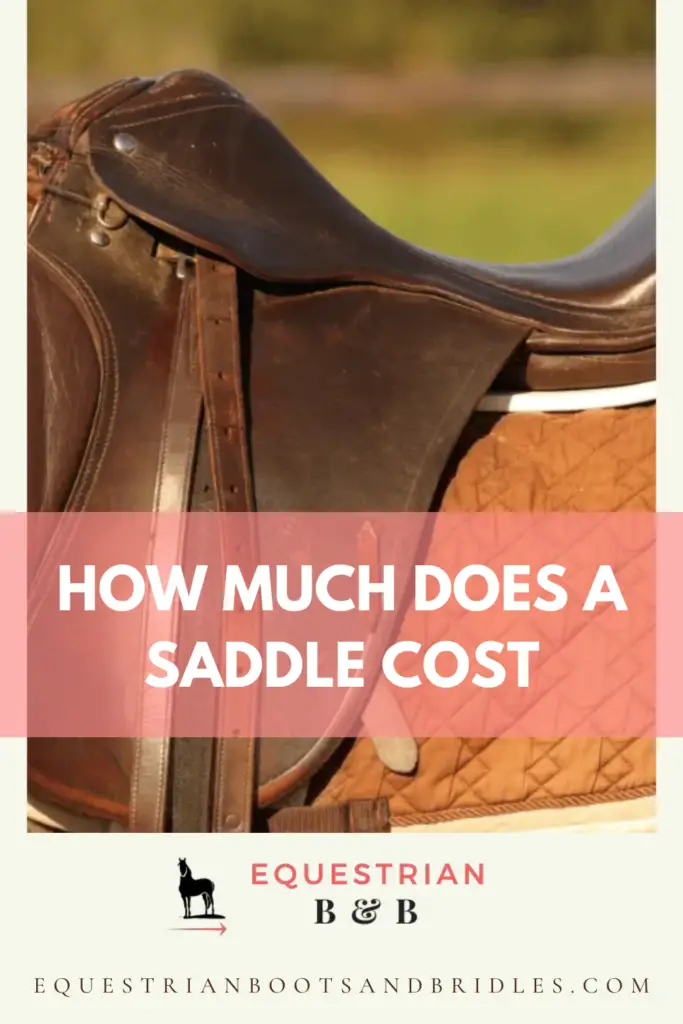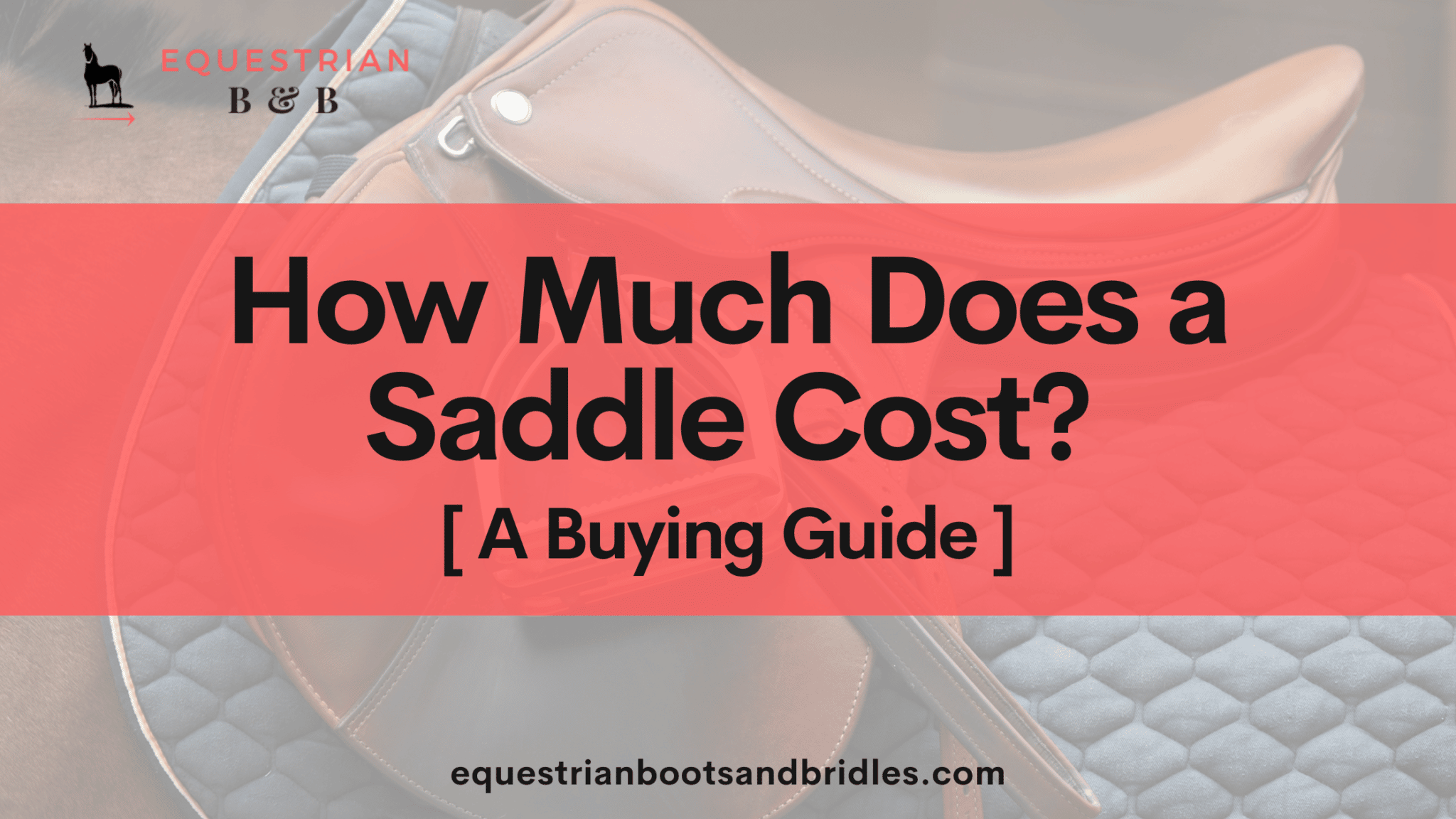You’re going to need a saddle at a certain point in your riding career, no matter if you intend to own a horse or ride school horses for the time being.
Having your own saddle makes it easier for you to feel secure as you ride most horses, helps you develop and refine your seat, and lets you show with confidence. The most important part of a saddle is the fact it connects you to your horse, so the two of you can work together in partnership and harmony.
The saddle you use and its cost depends on the discipline you prefer to ride, your overall goals, and the shape of your horse’s withers. All of these factors influence the price of a saddle, as well as allow you to become comfortable with using it.
Ultimately, buying your own saddle can be fun and can make a big difference in your riding experience. It means you don’t have to borrow a saddle for showing or ride in worn-out school saddles. It means you can put something onto your horse that you can be proud of.
But, buying a saddle can also be a frustrating experience because it is an investment and you want to make sure you make the right decision.
So, how much does a saddle cost?
Read on to learn more about what influences saddle cost and how to budget for your purchase.
This article contains affiliate links, so we may earn a commission if you decide to make a purchase.
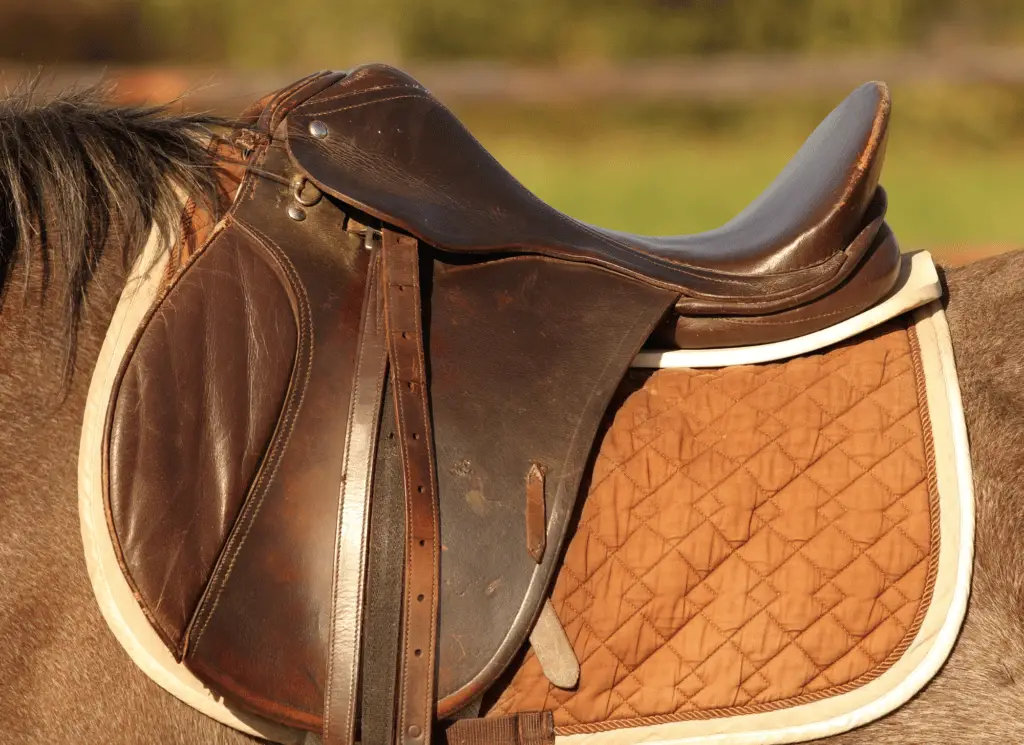
The Pricing Range of Saddles
It’s difficult to put an exact price on each type of saddle due to the fact that there are so many factors that go into their pricing.
A good, beginner saddle can cost as low as $250 USD, while a top-of-the-line dressage saddle can reach upwards of $8,000 for a Passier.
New saddles are always going to be the most expensive, while used saddles can be a bargain in comparison.
The best way to get an idea of the cost of the type of saddle you wish to buy is to look at retailers that include Stateline Tack, Big D, Chick’s, Schneiders, National Saddlery, and any other saddle retailer that’s been around for a long time.
Some retailers specialize in English saddles only, while others are western saddles only. Check the terms and conditions of the sale for return, find out if there’s a window of time for fitting the saddle and returning it, and check the manufacturer’s warranty for defective parts.
One place to get an idea of the cost of used saddles is eBay. People list all kinds of saddles that range from name-brand to no-brand on the site. You can get an average price for a certain type and brand to help you save or budget.
Use Influences Cost
Your intended use of the saddle plays a role in what you pay.
If you’re looking for a comfortable schooling and hacking saddle, consider an inexpensive synthetic saddle as it will be well-designed but cost less than a leather equivalent.
Are you looking to go the distance in the show ring? You’ll want a higher-end saddle, either western or English, to help you deliver your and your horse’s best performance.
If you’re a casual rider, you may prefer to find a used saddle that fits you and your horse well and won’t let you down in a time of need.
A Look at the Different Types of Saddles
Each riding discipline requires a specific type of saddle to perform movements, handle livestock, and let you hold a position while the horse does its job. These are the reasons why saddle shapes vary so much. You wouldn’t rope a calf off a Lane Fox, and you wouldn’t try to go over an oxer in a western saddle.
When you understand what goes into the making of a saddle, you also understand its cost and why it’s sometimes worth it to spend money on one.
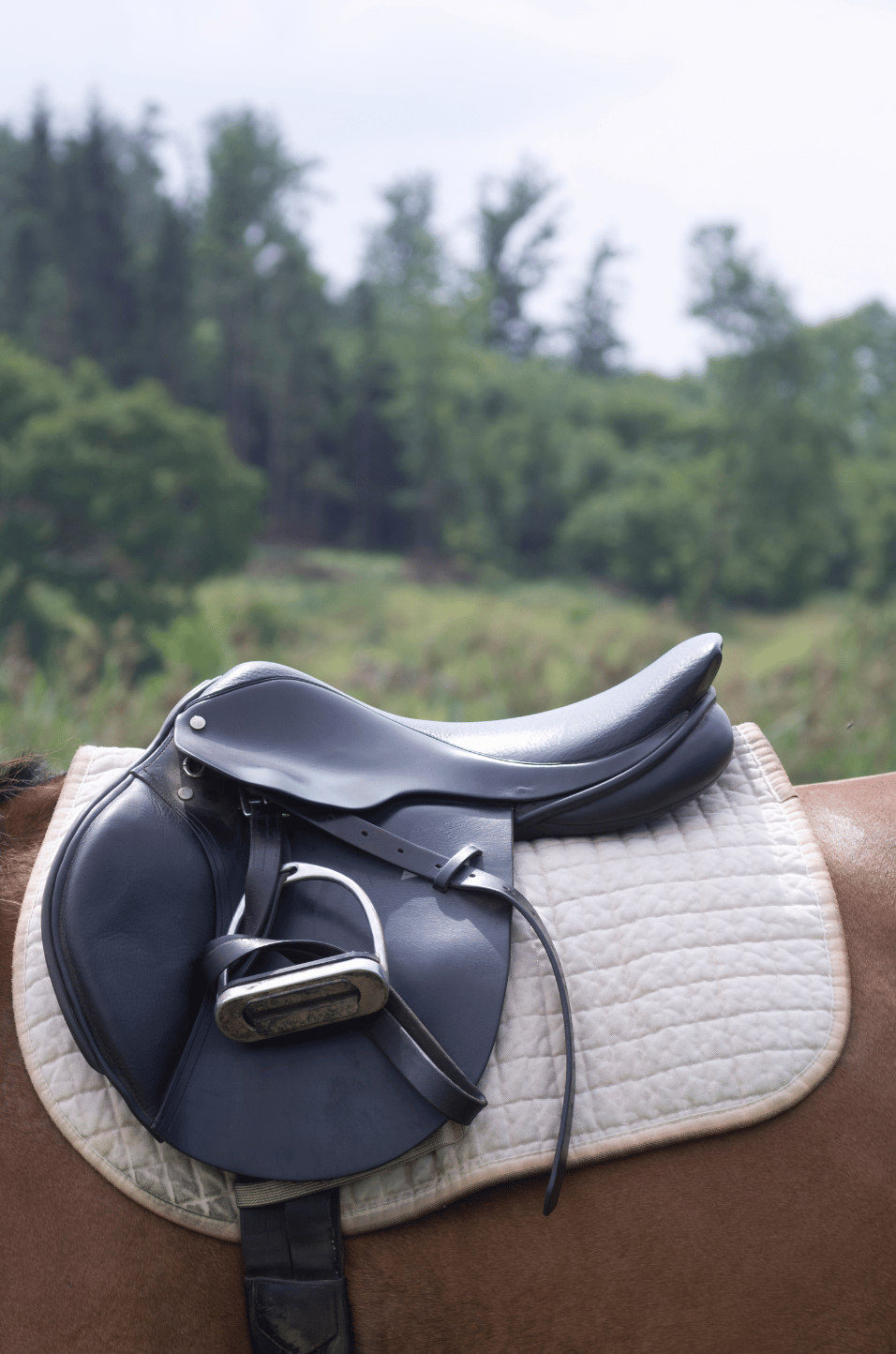
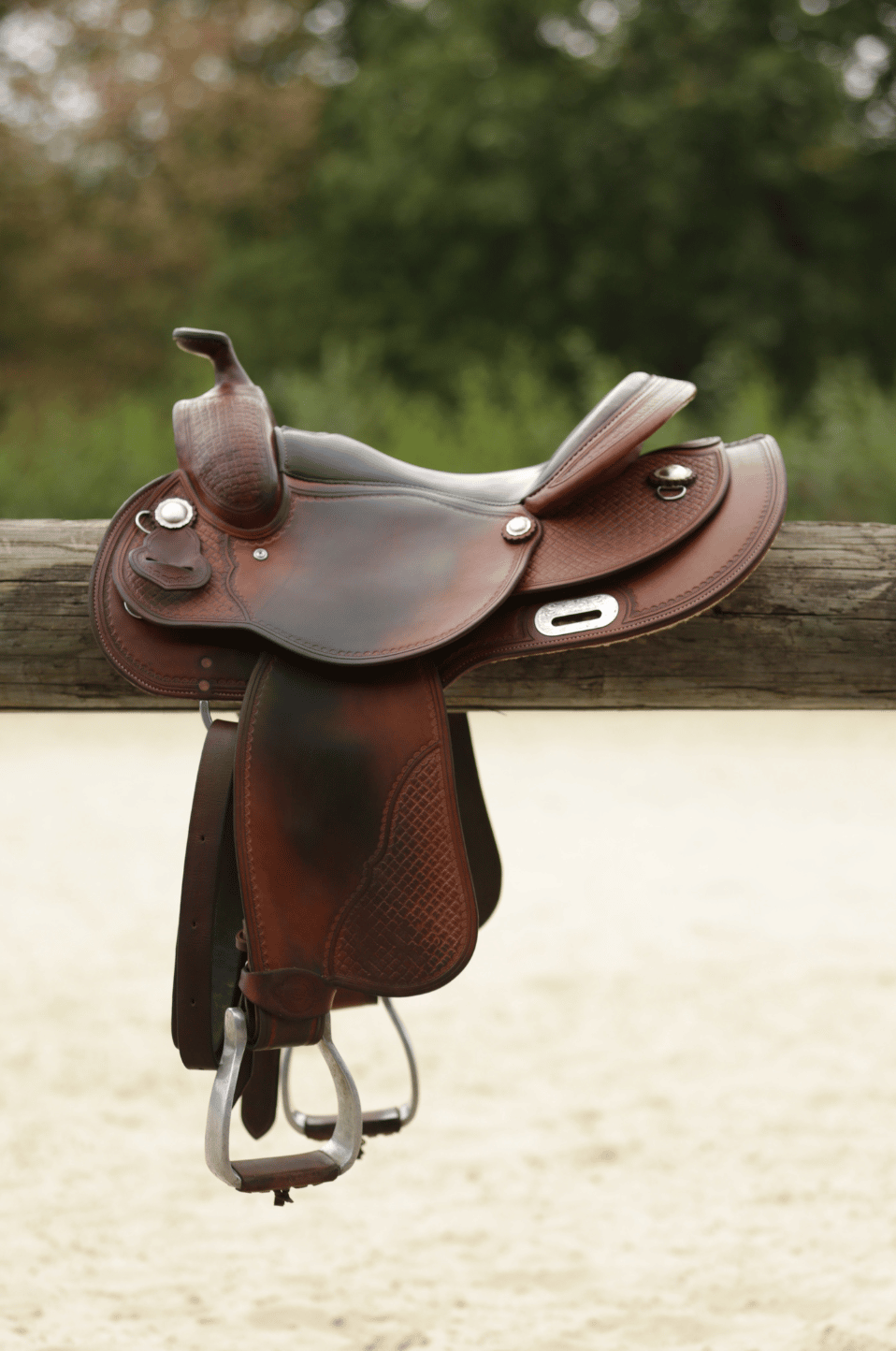
English saddles
English saddles don’t have a horn and have little in the way of materials between you and your horse. Each type of English saddle helps you engage in a specific type of discipline as well as improve your own riding style.
Dressage
A dressage saddle is similar in appearance to a Lane Fox (more on that one below), but has a smaller cut-out in the pommel. The skirt, or flaps, hang almost straight down from the cantle to encourage and enable the rider to keep their leg nearly straight.
It’s also heavier, and uses leg rolls for the rider to help them stay secure while the horse performs its movements. The overall design of the saddle is to enable the horse to use its shoulders freely in order to use its front legs according to the movement it’s being asked of by the rider.
General Price Range: $160 – $5,000
Hunter/Jumper
Hunt and jump seat saddles are similar, and indeed, one can be used in lieu of the other.
Both saddles have a high pommel that clears the withers, and has flaps that come forward towards the shoulder at an angle. Knee rolls tend to be shorter and higher to give the rider a place to press their knees against without coming out of the saddle after landing a jump.
Jump seat saddles are typically smaller and have a minimal amount of leather and padding between horse and riding for close contact. In contrast, a hunt seat saddle has more cushion.
General Price Range: $550 – $4,000
All-Purpose
The all-purpose saddle sits between the hunt and jump saddle in terms of appearance. It tends to have wider flaps and seat for spending long hours in the saddle, but provides excellent security for meeting a jump and staying in the seat during a gallop or a spook from the horse.
General Price Range: $100 – $5,000
Lane Fox
The Lane Fox saddle has one purpose only, and that’s to ride saddle seat or country pleasure. The pommel is cut back deeply to allow the saddle to sit farther back on the horse and gives the horse’s shoulders the maximum amount of freedom. A saddle seat horse has a high leg action, and the Lane Fox saddle lets the rider sit back from the withers without impeding the horse’s drive from the rear.
General Price Range: $200 – $400
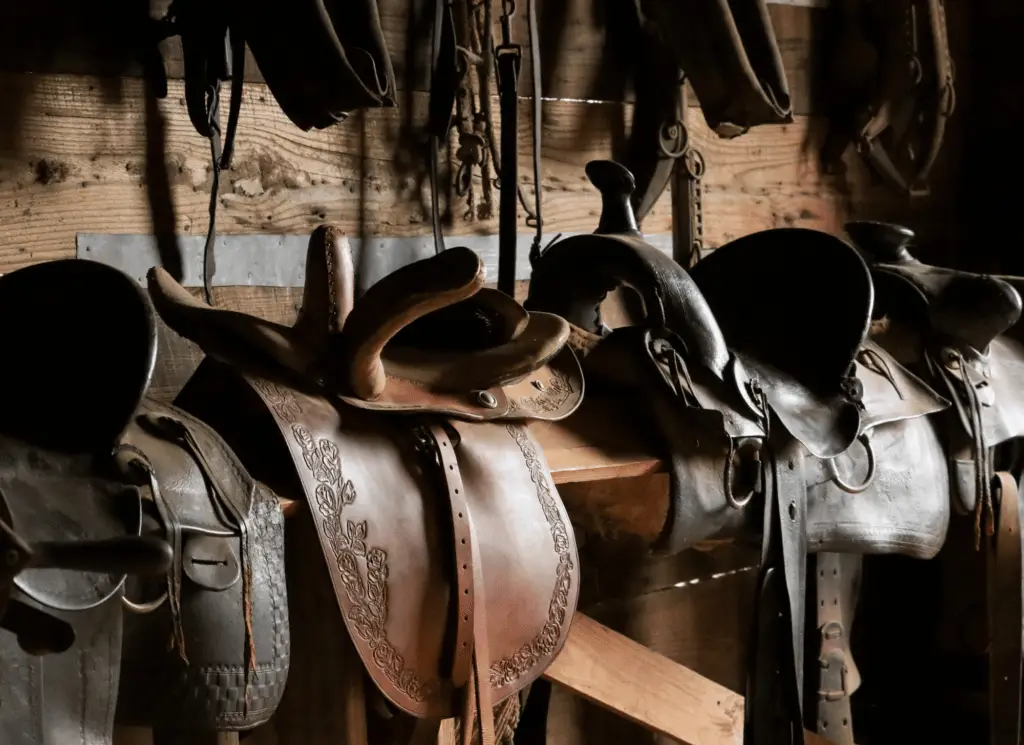
Western Saddles
Just like with English saddles, there are multiple types of western saddles to aid the rider in a specific activity.
Western saddles are heavier, have skirts and fenders, a horn on top of the pommel, and a high cantle to support the rider. The tree is much wider and higher than an English saddle in order to provide all-day comfort for the horse and help the rider stay in the saddle with ease.
Traditional
The traditional western saddle is one that has squared skirts and a fender that matches the contour of the rider’s leg. Its skirts cover the back of the horse. The seat is broad and wide with a horn and cantle of average height.
General Price Range: $200 – $4,000
Barrel Racing
A barrel racing saddle is a cut-down version of the traditional western saddle. A barrel racer needs to have tight contact with their horse as they perform the cloverleaf pattern, but can’t give up the support as the horse leans on an angle as it goes around the barrel. The rear and front skirts are mostly a suggestion, but it has full fenders.
General Price Range: $150 – $4,000
Ranch
The ranch saddle has a wide cantle and a shorter seat length to help you stay upright in the saddle for extended periods of time and minimize fatigue. Some have a tall rise to further support the pelvis. This also makes it easier for the rider to ride with a straight leg and maintain weight in the stirrup. The horn tends to be taller and wider to help with dallying a rope.
General Price Range: $250 – $4,000
Pleasure
Pleasure saddles, also known as trail saddles, have mostly level seats with a low cantle, pommel, and horn. The horn on the pleasure saddle is used as an aid for mounting the horse and present as a proper western saddle. You can spend hours on the trail in this type of saddle as it’s comfortable and supportive.
General Price Range: $150 – $3,000
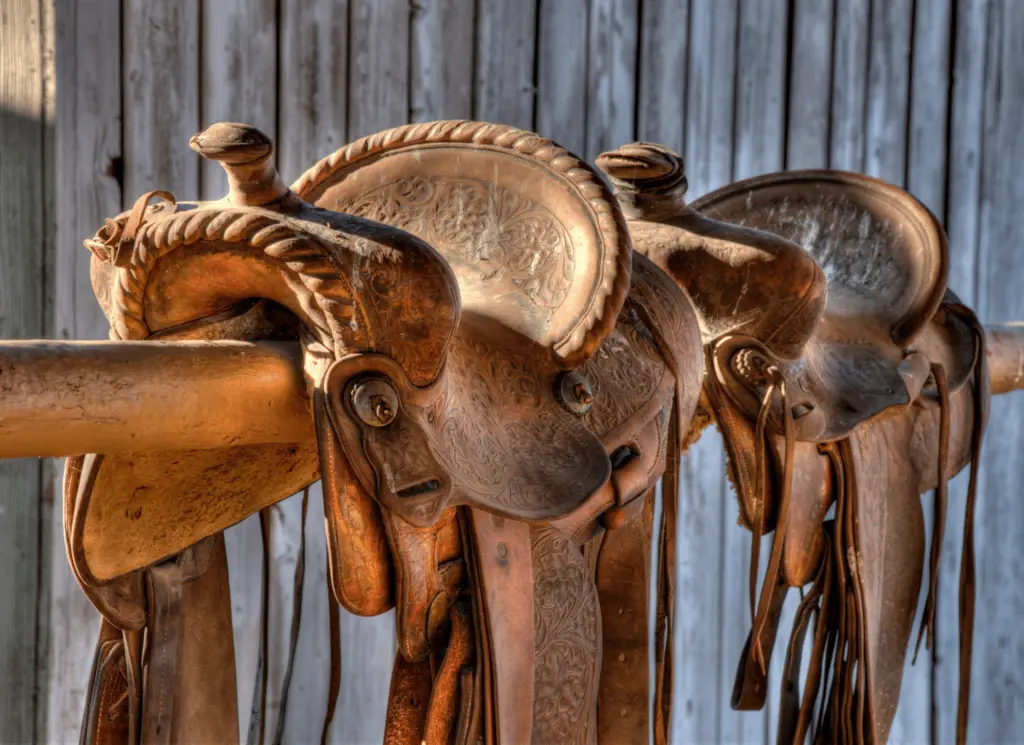
Things to Consider About Saddle Cost
When looking at how much does a saddle cost, you need to consider the brand, condition, age, and construction.
Older English saddles are made to last and are very affordable, but they tend to have narrower gullets. Meanwhile, older western saddles may have a seat shape that’s not comfortable to sit in, but fits your horse just fine.
A new saddle can be expensive, but you have the bonus of breaking it in to fit you and your horse over time. Here are some of the considerations to take in when you buy a new or used saddle:
Fit for Horse and Rider
Modern saddles come in a wide variety of sizes, widths, and gullet sizes. Some manufacturers feature a changeable gullet, so you can use your saddle on multiple horses. This influences the cost of a new saddle due to its construction and demand for its size.
Used Saddles
The average horse and rider anatomy size changes with time. That means older saddles may not fit a horse or rider very well, and you’re better off passing on them even if the price is great.
English saddles made before warmbloods became popular are more likely to have narrow gullets and can’t be altered to fit over wider and flatter withers. The saddle tree sets the width of the gullet, and you’re better off looking for a different saddle.
Western saddles are built with a wide tree that is easily padded underneath to fit the horse properly and not put pressure on the withers. Make sure that the seat has enough room for your hips and thighs to rest comfortably and avoid being crushed between the horn and cantle.
New Saddles
New saddles are built in a variety of trees and wither widths to accommodate the variety of breeds being used for competition and pleasure. This is true of western and English riding as the breeds used in both disciplines feature different conformations and wither shapes.
The difference in wither and tree designs sometimes restricts their usability, but you can use saddle pads for most fitting adjustments. If you ride multiple horses with different conformations for English riding, look at a saddle with an adjustable gullet to save money.
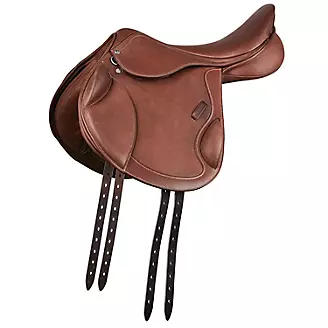
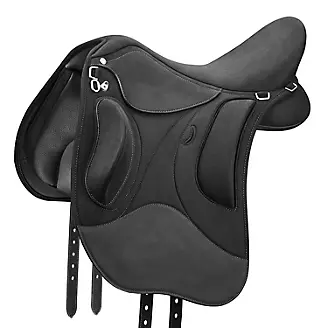
Materials
Leather
Leather has been used for saddles since time immemorial. It’s sturdy, lasts for decades, is repairable, and is easily cleaned. It’s also more expensive than synthetic materials, but is worth the up-front cost due to the fact a leather saddle outlasts synthetics.
Synthetic
Synthetic saddles hit the market in the late 1990s and quickly gained popularity. Major manufacturers introduced their own versions, using quality materials and built on top of traditional saddle trees.
However, nylon fabric wears through more quickly than leather, and is more difficult to clean. These saddles tend to be more affordable, but cheaper saddles are less likely to last compared to expensive versions.
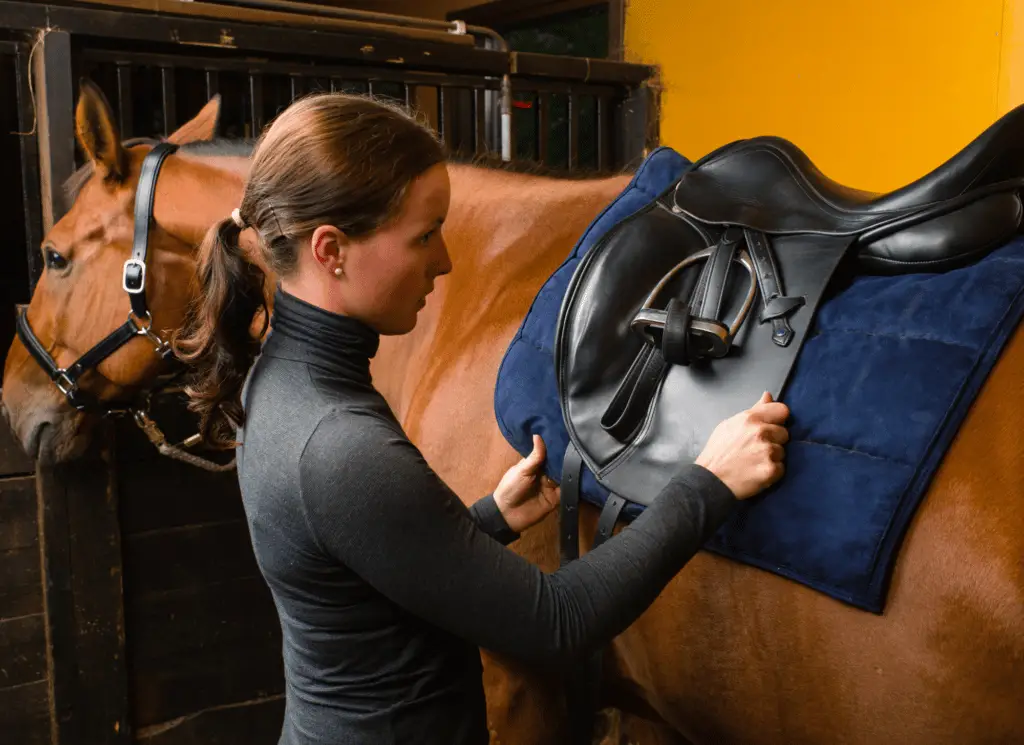
Buying New vs. Used Saddles
There are pros and cons to buying used and new saddles, and you have to decide what makes the most sense for you as you consider the two types. Some of the issues have been covered, but here’s a few more to think about.
Best Practices When Buying a Used Saddle
Buying a used saddle saves you money up front, and can be good value, especially if it’s made by a high-quality manufacturer.
Prior to buying, go over the saddle to make sure the tree isn’t broken, the stirrup bars are in good condition and the locks hold, the girth and stirrup straps aren’t ripped or cracking, and there are no thin spots in the leather. You can flex the saddle gently and feel for unusual play in the tree to find a break.
You may find that a used saddle needs to be restuffed or re-lined with new sheepskin, and some of the leather straps need replacing.
Pros & Cons of Buying a New Saddle
A new saddle requires a break-in period, and finding one that fits your horse right can be a chore.
However, a properly fitting saddle for you and your horse makes for a wonderful ride and lets you connect to your horse. You’ll find that your cues are more distinct, your horse responds better, and you feel great when you’re learning and performing the movements required by your discipline.
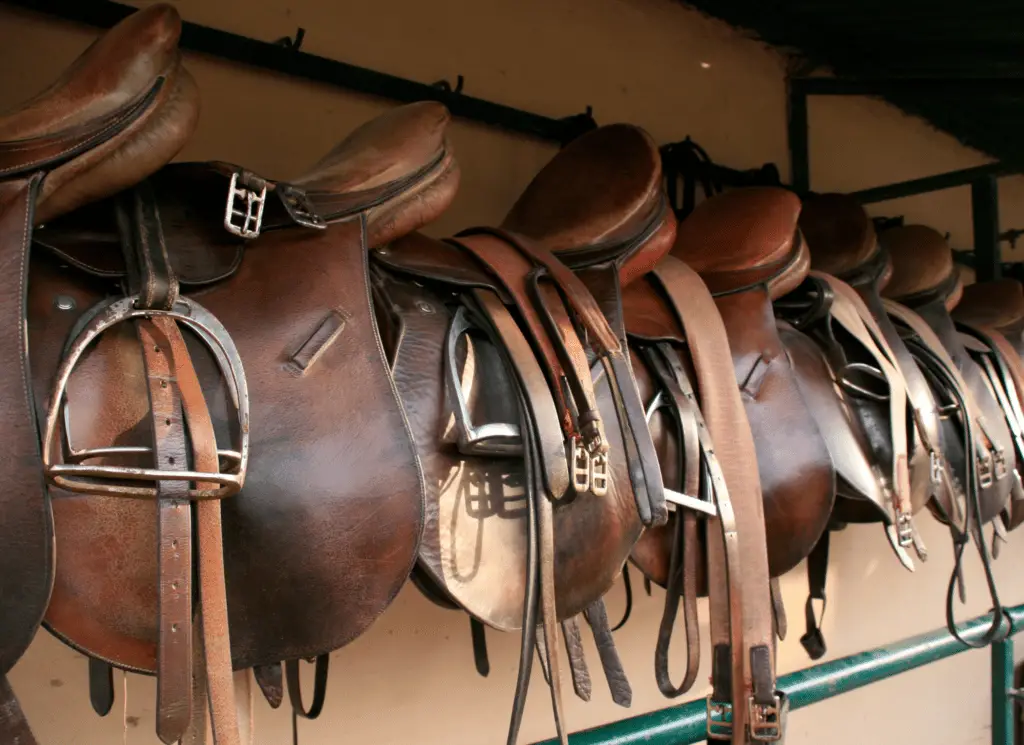
Best Places to Buy Saddles
Saddle buyers have a multitude of options when it comes to buying a saddle. The rise of e-commerce has made it easier than ever to buy a saddle.
You can find saddles anywhere from Stateline Tack to Dover Saddlery to eBay and be assured of good quality and fit. You can also ask around to learn about local saddlers as you can trailer your horse to their shop and try on multiple saddles to find one that fits right.
A saddler or saddlery shop is also an excellent resource to learn more about saddle fit and using the right type of saddle pads for cushioning.
There’s a number of different inputs to consider when buying a saddle. The best way to budget is to look at different retailers and e-commerce sites for an average price, get an idea of condition versus price, and look at the average price for the type of saddle you’re interested in buying.
You want to be happy with the saddle you get for the price you pay. Researching before buying helps you get the saddle you want at the price you like, and one you’ll enjoy sitting in while making your horse comfortable.
Like this post? Save it on Pinterest. Follow me on Pinterest.
